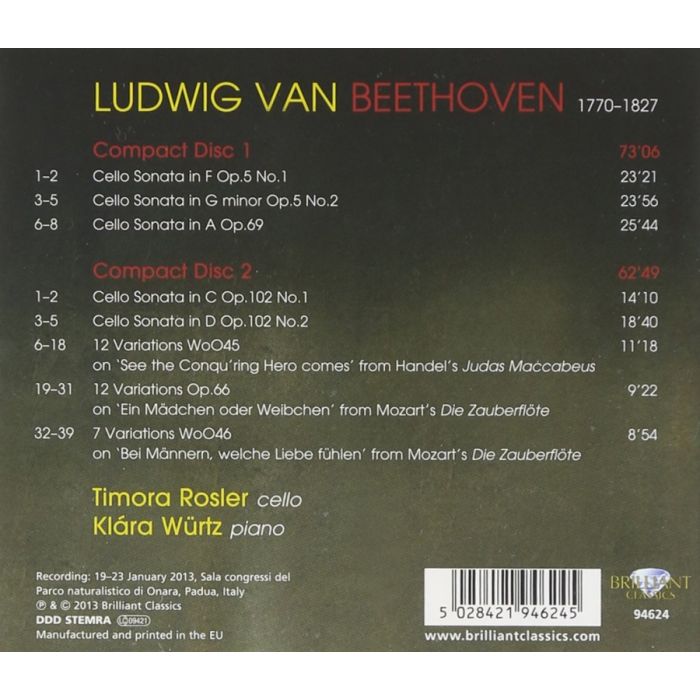
(Produkt nie został jeszcze oceniony)
kompozytor
Beethoven, Ludwig van
tytuł
Beethoven: Complete Cello Sonatas & Variations
wykonawcy
Rosler, Timora, Würtz, Klára
nr katalogowy
94624
opis
Beethoven’s oeuvre only comprises a small collection of works for cello and piano, but that the composer was an accomplished writer for this combination of instruments is evident from the fact that Jean-Louis Duport, one of Frederick II’s court cellists and one of the most revered musicians of his day, incorporated many of the techniques found in the Op.5 sonatas into his instruction manual for cello. The two works each contain only two movements, and the absence of a slow movement was probably to avoid the problem of dynamic imbalance between the instruments (which would have been accentuated in adagio passages) – something that is also the case with the Op.68 sonatas, composed in 1807. Only with the second Op.102 sonata does the composer finally replace the slow introduction, as found in No.1 and all of the above works, with a full-scale slow movement, one that precedes the massive fugal finale that was to form such an intrinsic part of Beethoven’s late-period works.
nośnik
CD x 2
wydawca
Brilliant Classics
data wydania
13.11.2019
EAN / kod kreskowy
5028421946245
64,00 zł
Produkt na zamówienie
Wysyłka ustalana indywidualnie.
Darmowa wysyłka dla zamówień powyżej 300 zł!
Darmowy kurier dla zamówień powyżej 500 zł!
sprawdź koszty wysyłki









